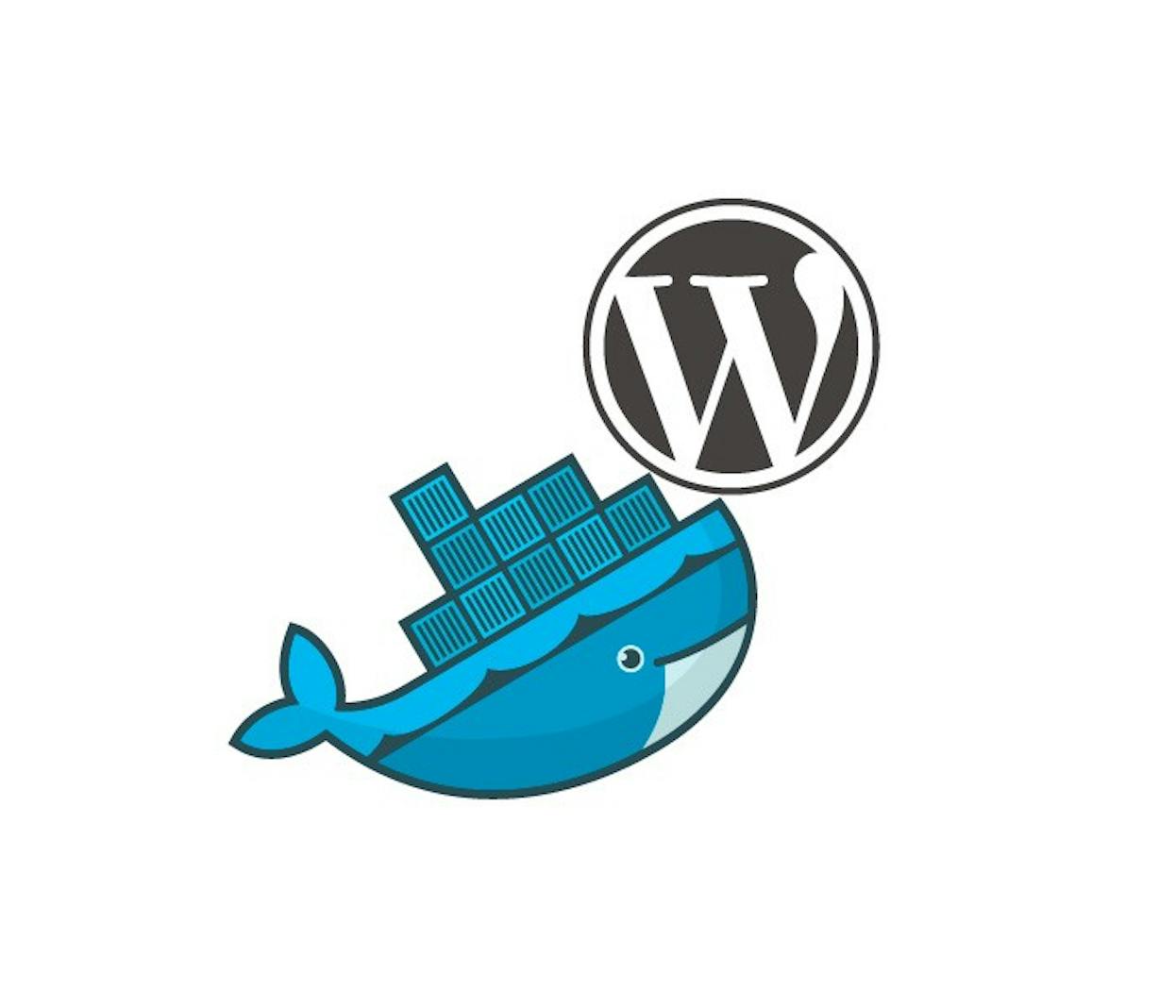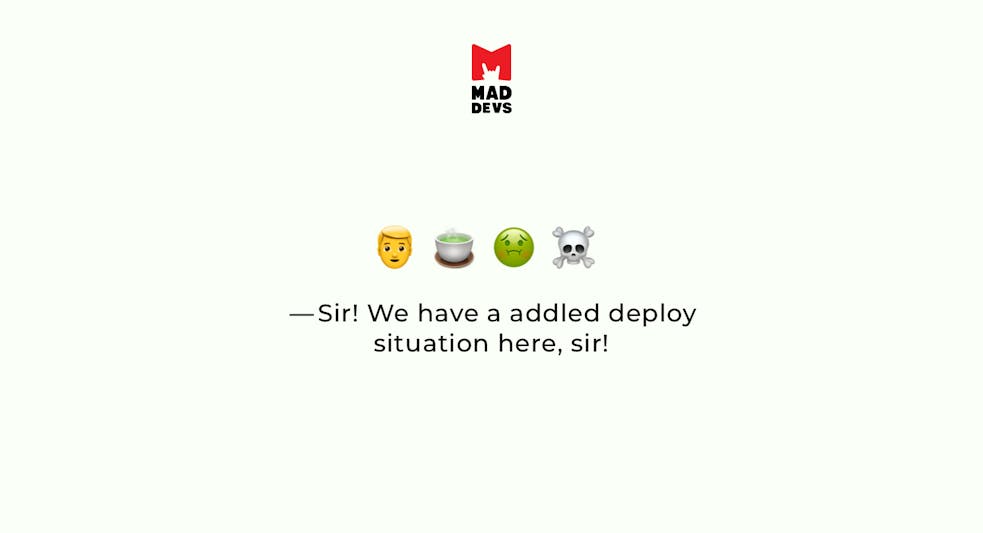Docker Cloud is a powerful tool that allows us to automate image builds, provision docker nodes, and create CI/CD pipelines. A month ago Docker introduced swarm mode for the Docker Cloud. And now teams and individuals can create and manage new or register their existing swarms and operate with them with docker id.
Our goal is to create a new swarm and deploy scalable WordPress.
Create a WP swarm
Before we begin we should link our docker cloud to Amazon Web Services. After this procedure, we can create swarms with several clicks.
Let’s create our WP swarm and choose EC2 instance type and a number of manager and worker nodes below (I hope Docker Team will add a possibility to select different instance types for labeled groups of worker nodes).
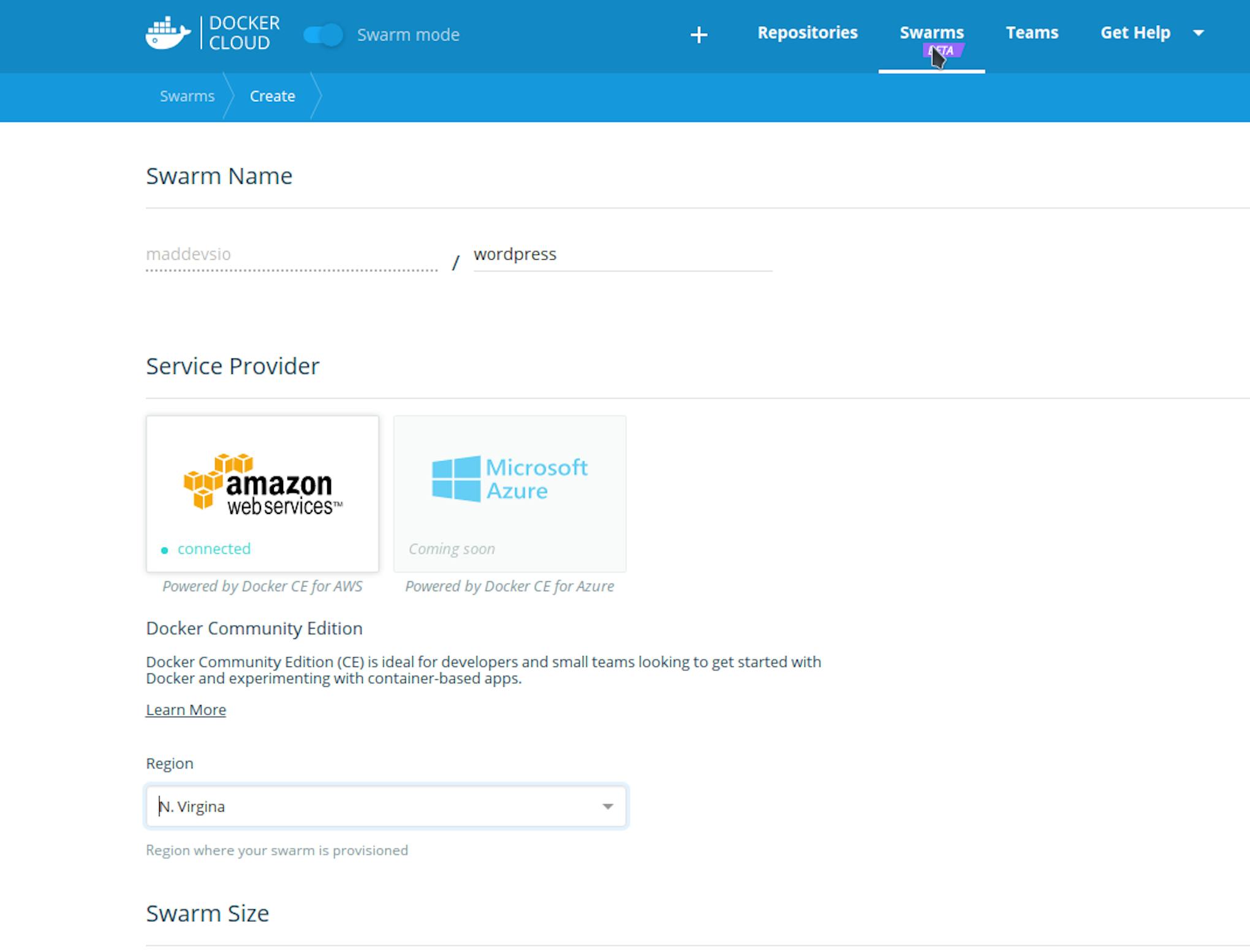
To persist our data we will use EFS and we should remember that only three regions offer efs support in NA.
After clicking the Create button it will take about five minutes to deploy swarm on Amazon. Docker Cloud uses CloudFormation template, the final result looks like this
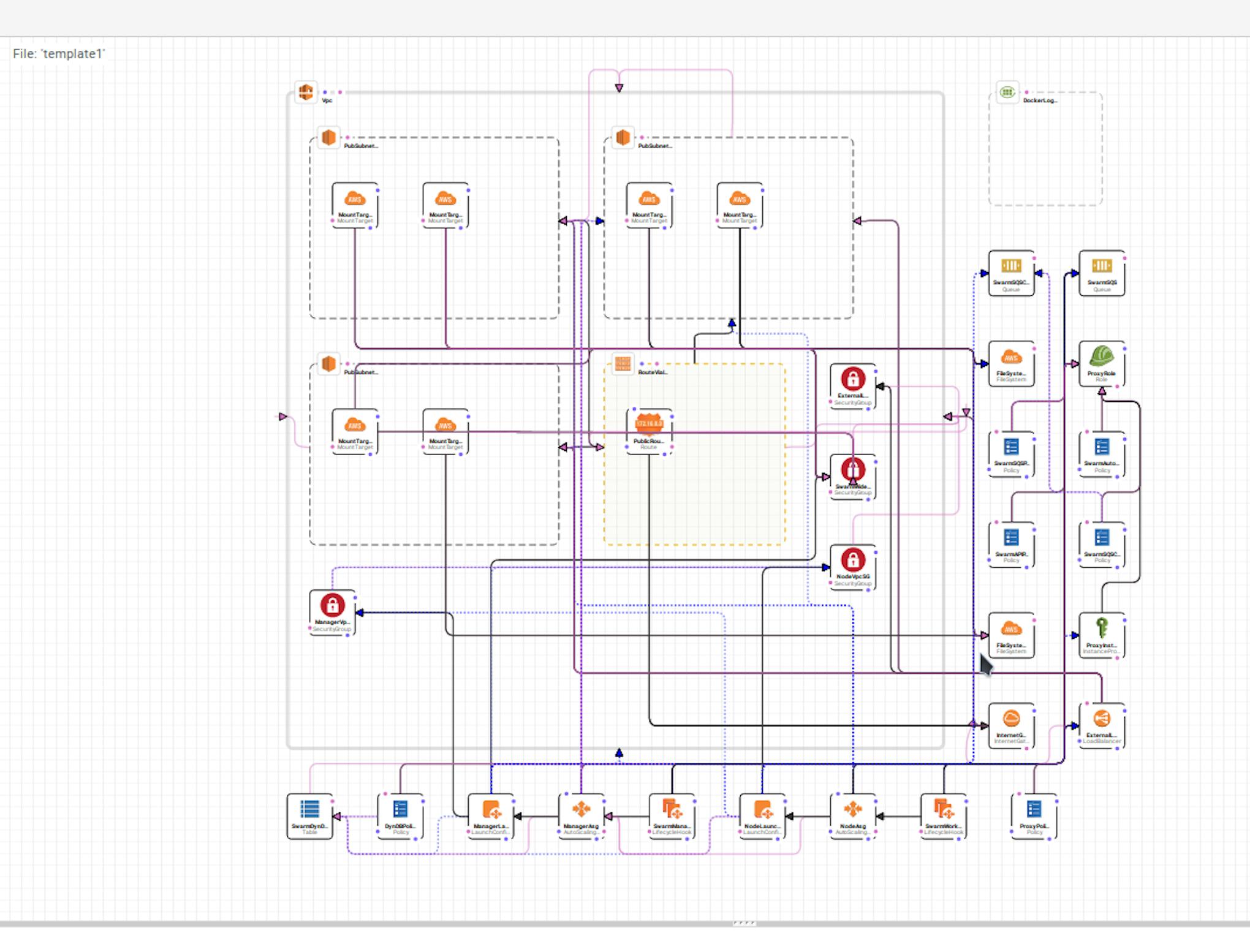
To get instructions on how to connect to the new swarm just click on it when the status changed to deploy.
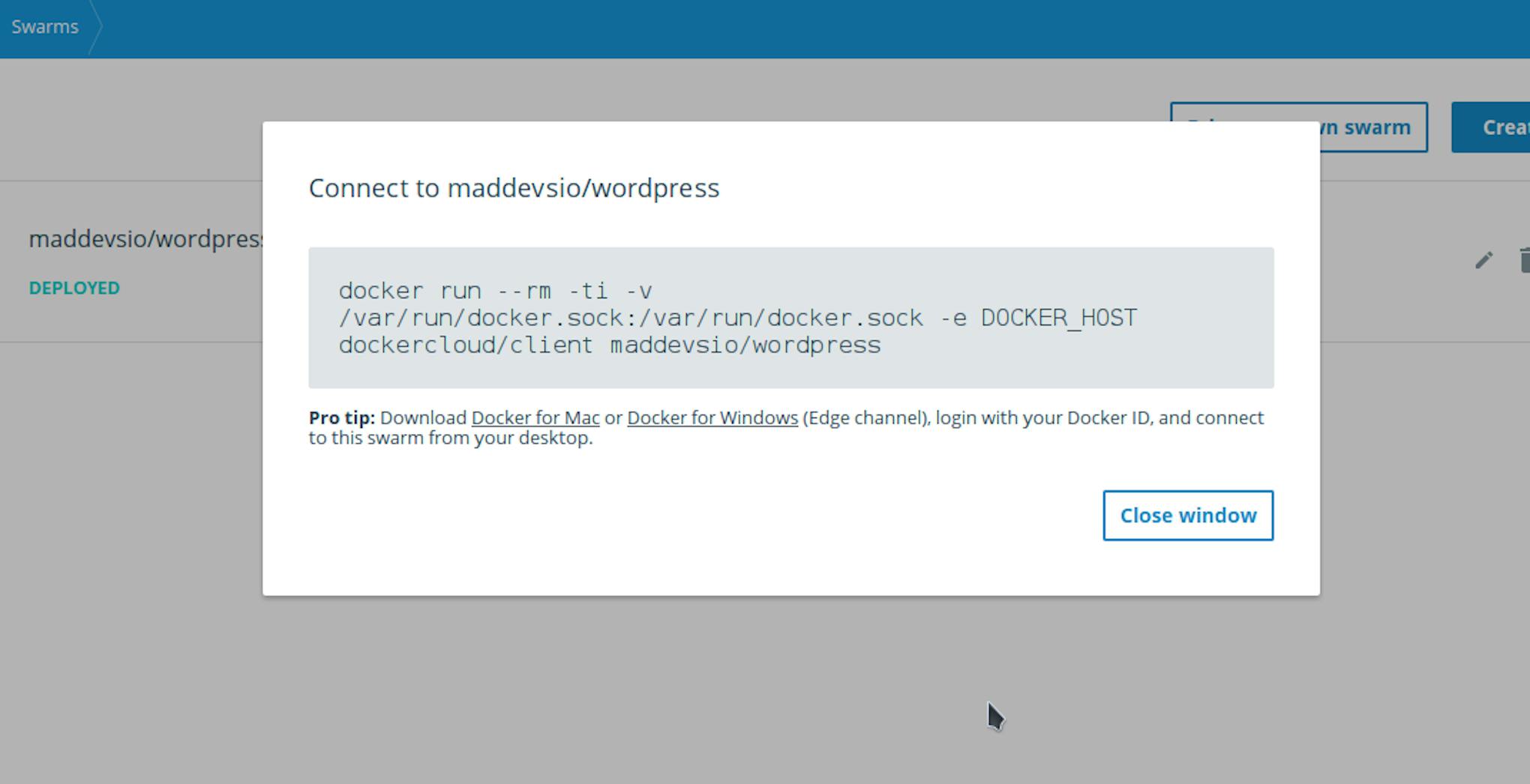
I’ve created swarm with three managers and two worker nodes:
Now let’s create temporary wordpress service to test our swarm.
We need secrets for our database:
overlay network:
and MariaDB service:
And finally run WordPress:
Every published port will be automatically added to the ELB entrypoint and we can proceed WP installation using web wizard:
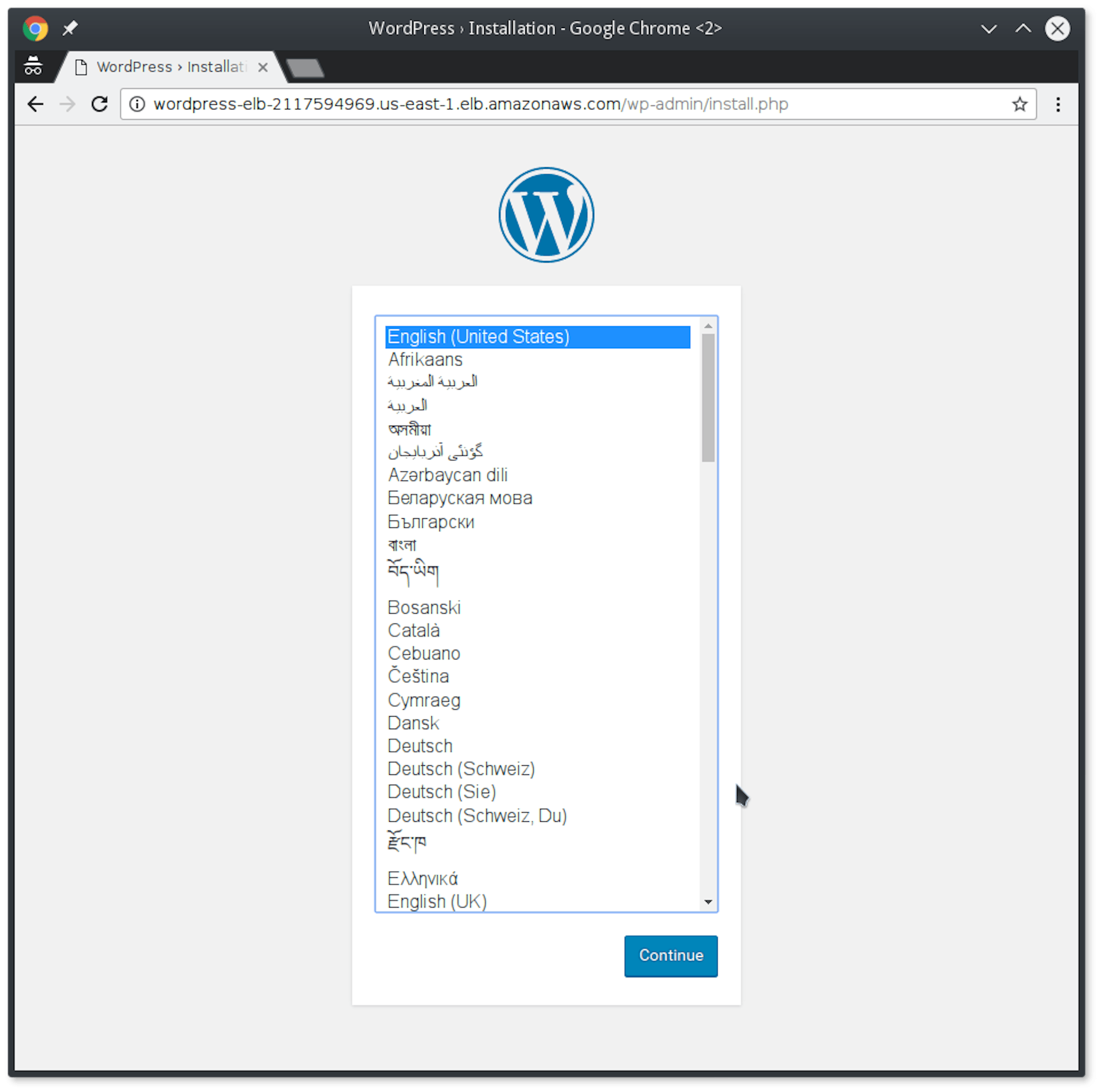
Fix issues
That’s simple and great but with this WordPress instance we have several issues:
- No SSL
- No Persistance
- No Scalability (we can scale WordPress service, but wp-content will be different in all containers)
Let’s destroy this WP service and try to fix those issues with
If you deploy swarm to the EFS-compatible region Docker Cloud will install cloudstore:aws storage driver to every node, and this allows you to mount EFS storage as a docker volume. By default this driver uses general purpose EFS. For MariaDB service we will use maxio option. Also we will start traefik service to generate LetsEncrypt SSL and serve our vhost.
Here is our docker-stack.yml:
Before start we should create CNAME wp.maddevs.io pointing to our ELB entrypoint. Then create networks and database secrets:
And deploy stack:
Now we can open our WordPress url https://wp.maddevs.io/ with http to https redirect.
And now we can scale traefik and wp manually:
Or by editing deploy section in our yml and redeploy stack.
We didn’t create more complicated infrastructure using another Amazon services like RDS, S3 + CloudFront, Elastic Cache etc but example above shows us the perfect symbiosis of cloud hosting and swarm mode with new docker >v1.13 features. Docker Cloud swarm mode removes our concerns about infrastructure and swarm management.
And it’s only beta.

